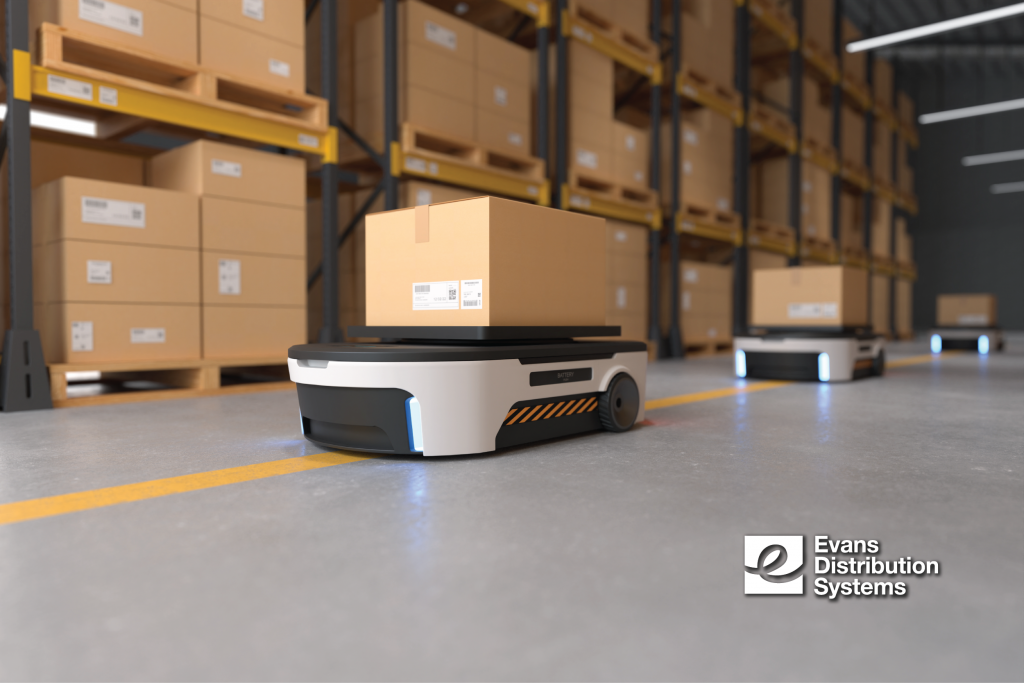Modern warehouses are becoming technology hubs as processes are becoming more automated and optimized. Here are the top warehouse technologies that are making a huge impact on the industry.
Internet of Things (IoT)
The internet of things (IoT) connects objects through a wireless network to exchange information and collect data. This technology revolutionizes many industries as well as warehousing. In a warehouse, IoT sensors can be found on material handling equipment, RFID tags, wearables, and robots. Voice picking is a common IoT technology that audibly sends order information to a warehouse associate. IoT allows objects to interact autonomously in a warehouse and feeds valuable data into the warehouse management system to track activities and goods.
Collaborative Robots (Cobots)
Cobots are robots that work side-by-side with humans on repetitive, strenuous, or hazardous tasks. Cobots are a great addition to a warehouse environment that is engaged in light assembly or manufacturing, enabling humans to take on more complex tasks. A common application of a cobot is to lift products onto conveyors or palletize products. Cobots are known to minimize errors and increase productivity. They can be programmed to accomplish multiple tasks making cobots a diversified solution that can be applied in a variety of ways.

Automated Guided Vehicles (AGVs)
Automated guided vehicles are material handling systems that travel autonomously. The most common application of AGVs is load carriers, which cart goods from where a product is stored to the order assembly location, in a highly repetitive fashion. AGVs come in a variety of shapes and sizes, with some being large enough to carry the same weight as a forklift.
Mobile and Wearable Technologies
As we reach 5G connectivity levels, mobile and wearable technologies become more valuable. Wearable technologies are wireless devices that can be worn on the body. The most common wearables are on the wrist or face and can be audio and visual. Mobile technology includes vehicle-mounted tablets or scanners that read barcodes and track inventory in the WMS. Wireless printers are used to print labels and orders as they come through the order management system. Wearables are advantageous in a warehouse setting because they provide information related to tasks without impeding movement needed to fulfill the task.
Artificial Intelligence (AI) & Machine Learning
The power of AI and machine learning can be found in automated processes. Evans Distribution Systems uses AI to verify order accuracy on the small parcel pick line. If the box does not match the order it is pulled from the line and repacked. The more time and frequency that a machine is engaged in a task, the smarter and more reliable it becomes. Nearly every robot or automation utilizes AI to increase speed and efficiency.
All of these technologies lead back to a common theme: data. They either rely on data or generate data insights that further optimize warehouse performance. System integration in one business intelligence hub provides enormous insight into operations, inventory, product cycles, labor, and much more. Insight and technology lead to better customer service and more satisfied employees.
Evans Distribution Systems has an in-house IT team that is dedicated to deploying new technology and custom integrations. If you’re looking for a technology-driven 3PL that will take your supply chain to the next level contact us today.
